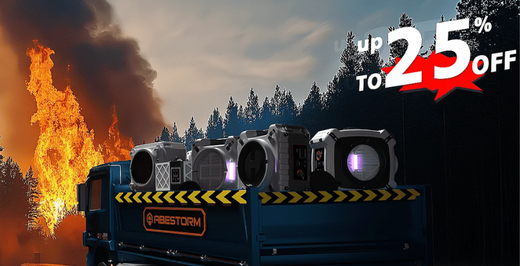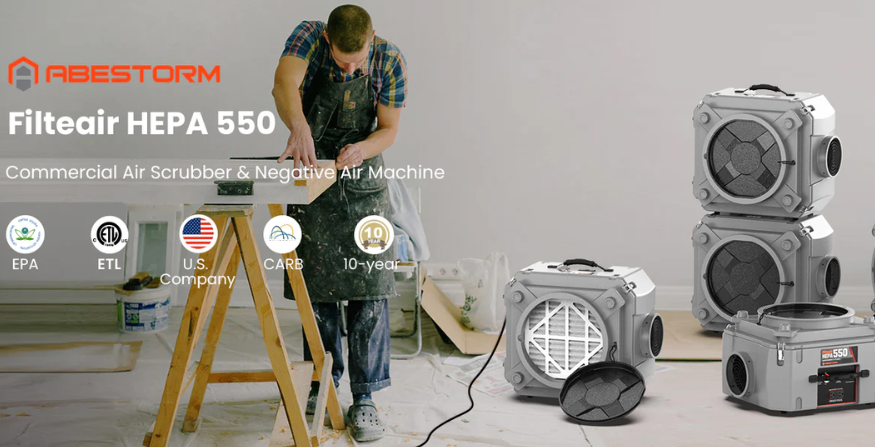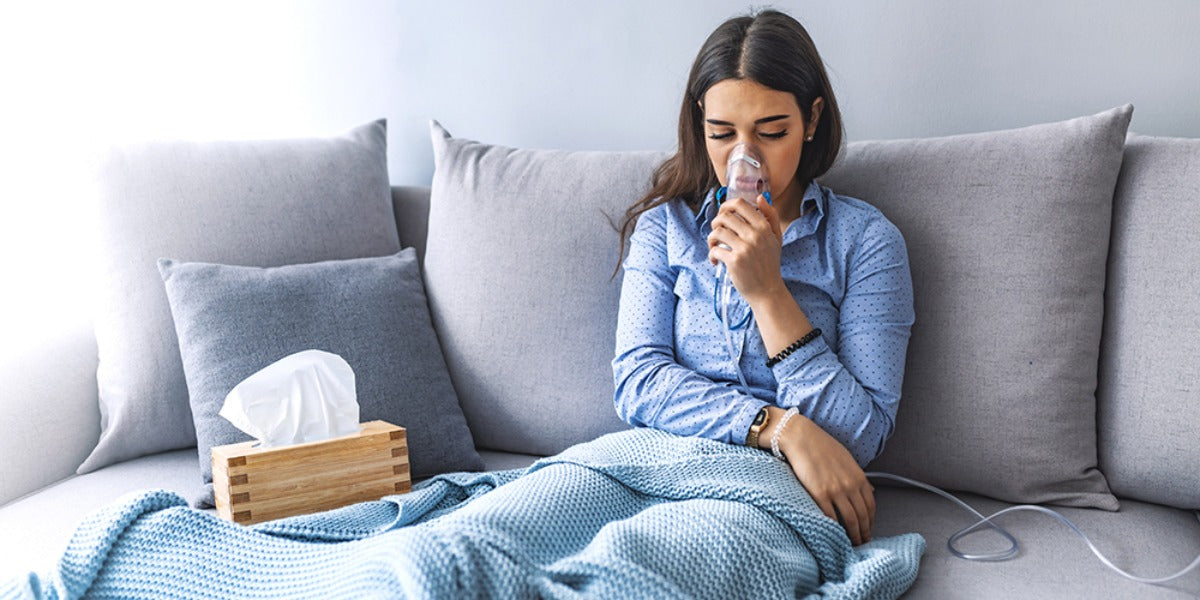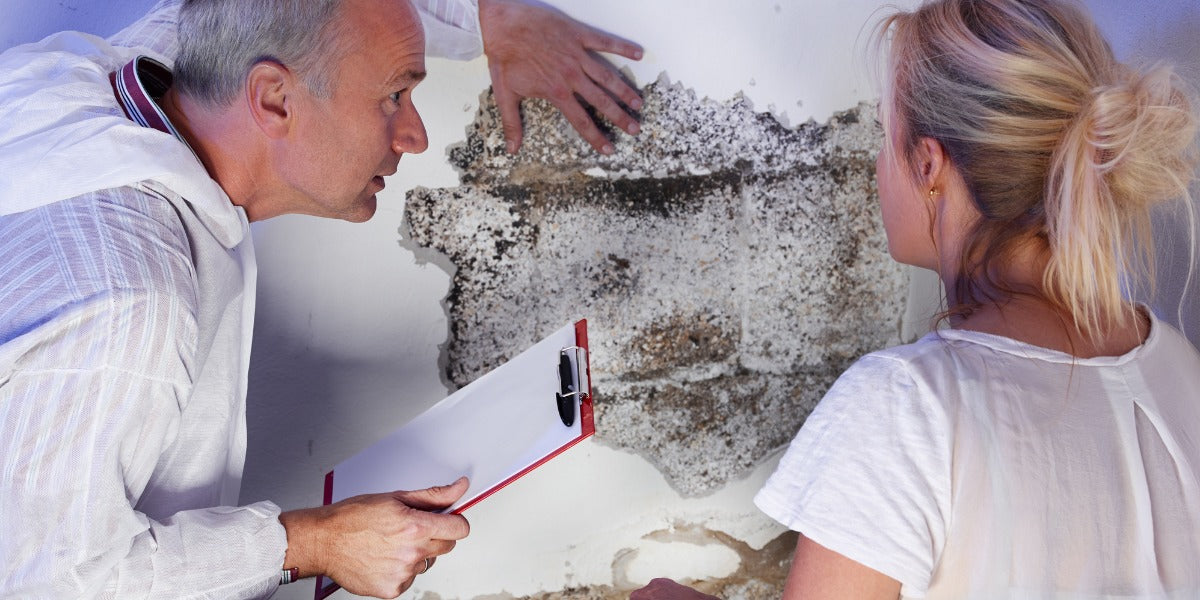Have you seen molds in your shower cracks? Ohh bad! You are not alone in suffering from such an unhygienic sight. Mold in bathrooms, especially within the tight and often overlooked cracks of your shower, poses a significant cleaning challenge and a serious health concern. Thriving in damp and poorly ventilated environments, mold can rapidly colonize areas, leaving unsightly and potentially harmful patches, particularly on the bathroom ceiling and shower surfaces. The answer to the burning question of removing mold from the shower is better air quality and that can be done through Abestorm 550 CFM Filteair HEPA S2 Air Scrubber. This blog will guide you through effectively removing mold in bathroom and discuss how enhancing your home's air quality with solutions like air scrubber for mold can prevent future mold growth.
Understanding Mold in the Bathroom
Mold thrives in moist, warm environments, making bathrooms an ideal breeding ground. This fungal growth can often be spotted as dark or greenish-black patches on bathroom ceilings, in the corners of showers, and along grout lines. Mold in bathrooms damages the surface aesthetics and contributes to various health problems, ranging from mild allergic reactions to serious respiratory issues.
Types of Mold Commonly Found in Bathrooms
The most common types of mold found in bathrooms include Aspergillus, Cladosporium, and the notorious Stachybotrys Chartarum—often called black mold. These molds vary in color, texture, and growth patterns, with some preferring the silicon parts of your shower and others, like mold on bathroom ceilings, thriving on paint or plaster. Understanding the types of mold you’re dealing with is crucial for effective removal and choosing the right treatment strategy.
Mold growth is not just a surface problem. Spores can become airborne, affecting indoor air quality and leading to health issues if inhaled. Integrating an air scrubber HEPA system in your HVAC can significantly help in filtering out these spores, ensuring they do not circulate through your home.
Causes of Mold Growth in Shower Cracks
Mold growth in shower cracks results from a combination of persistent moisture and inadequate air circulation. Understanding these underlying causes can help you tackle the problem more effectively.
Persistent Moisture
Shower cracks often retain water longer than other surfaces in the bathroom. This constant dampness provides a perfect environment for mold spores to settle and grow. Routine activities such as showering increase the humidity levels in the bathroom, which further exacerbates the situation by giving mold an ample supply of moisture to thrive on. Moreover, it can lead to mold on bathroom ceiling too.
Inadequate Ventilation
Poor ventilation is a significant contributor to mold growth. Without proper airflow to reduce humidity and dry out wet surfaces, moisture lingers, creating ideal conditions for mold proliferation. Bathrooms, particularly those without windows or with insufficient exhaust fans, can trap moist air inside, especially after hot showers, which directly contributes to mold growth in susceptible areas like shower cracks and mold on bathroom ceilings.
Step-by-Step Guide to Removing Mold
Removing mold from shower cracks requires careful attention to ensure that the mold is removed and the area is treated to prevent future growth. Here’s a step-by-step approach:
Step 1: Safety First
Before starting the mold removal process, protect yourself with non-porous gloves, a face mask, and goggles to prevent contact with mold spores.
Step 2: Choose the Right Cleaner
For minor mold problems, a solution of household detergent and water can be effective. For more severe cases, you may need a stronger mold-killing solution like bleach diluted in water (one part bleach to 16 parts water). Always ensure the room is well-ventilated when using strong chemicals.
Step 3: Scrubbing the Mold
Apply the cleaning solution directly to the moldy areas and use a stiff-bristled brush to scrub the mold away from the shower cracks. Be thorough but gentle to avoid damaging the grout or sealant.
Step 4: Rinsing and Drying
Once the mold has been scrubbed off, rinse the area thoroughly with clean water to remove any residue of mold or cleaner. It's crucial to dry the area completely after rinsing, as any lingering moisture could lead to the mold returning.
Step 5: Apply a Sealant
After the area is dry and mold-free, applying a mold-resistant sealant to the cleaned cracks can help prevent mold from returning. This sealant provides a barrier that keeps moisture out, reducing the likelihood of mold growth.
By following these steps, you can effectively remove mold from shower cracks and help ensure that it does not return. Remember, keeping the area dry and well-ventilated is key to preventing mold growth. Additionally, using an air scrubber for HVAC systems can help maintain lower humidity levels and improve air quality, reducing the overall mold spore count in your home.
Preventing Future Mold Growth in Showers
After addressing existing mold, it's crucial to implement strategies that prevent its recurrence. Here are practical tips to keep your bathroom mold-free:
Improve Ventilation
Enhance airflow in your bathroom by using exhaust fans during and after showers to help reduce humidity levels. If possible, open windows to allow fresh air to circulate and further dry out the bathroom.
Regular Cleaning
Frequent cleaning can prevent mold spores from settling and proliferating in your shower cracks and other surfaces. Use mold-inhibiting cleaning products weekly to keep areas prone to moisture buildup clean and dry.
Control Humidity
Consider using an Abestorm dehumidifier or an air scrubber for HVAC systems to maintain optimal humidity levels in your bathroom. Keeping humidity below 50% will significantly reduce the likelihood of mold growth.
Seal Grout Lines
Apply a waterproof sealant to grout lines annually to prevent water from seeping into any cracks. This not only helps prevent mold but also prolongs the integrity of your shower surfaces.
Enhancing Air Quality with Air Scrubbers
To complement physical cleaning and moisture control, integrating an air purification system like an air scrubber can be highly effective in maintaining a mold-free environment.
Benefits of Air Scrubbers
Air scrubbers equipped with HEPA filters, such as the air scrubber HEPA systems, actively remove mold spores and other allergens from the air, ensuring that these irritants are not inhaled or allowed to settle on surfaces. They are particularly useful in rooms like bathrooms where humidity and moisture are prevalent.
Choosing the Right Air Scrubber
When selecting an air scrubber for mold, look for models specifically designed to handle high-humidity environments. An air scrubber for mold should have features that accommodate continuous operation in moist conditions without compromising the device’s efficiency or lifespan.
Installation Tips
For optimal effectiveness, place the air scrubber for HVAC in a strategic location where airflow can be maximized throughout the bathroom. Regular maintenance, such as replacing the Abestorm air purifier filter as recommended, ensures that the unit continues to function at its best.
Long-term Mold Management Solutions
For homeowners looking to implement long-term solutions to mold issues, especially in challenging environments like bathrooms, it's essential to consider more comprehensive strategies beyond routine cleaning and repairs. Integrating advanced technology such as air scrubbers for HVAC systems can play a pivotal role in continuously maintaining low humidity levels and purifying the air from potential mold spores. These systems, especially those equipped with HEPA filters like the air scrubber HEPA models, not only reduce the presence of mold but also other airborne contaminants, which can lead to improved overall air quality in your home.
Regular assessments by professionals can also ensure that your ventilation systems and air scrubbers are optimally configured and maintained to prevent mold growth. Incorporating preventative maintenance routines is also crucial.
Conclusion
Mold in bathrooms, especially within shower cracks, poses a significant health risk and can be challenging to eradicate completely. By following the steps outlined for mold removal and prevention, and by enhancing your air quality with an air scrubber, you can create a safer and healthier bathroom environment. Regular vigilance and maintenance are key to keeping your space mold-free.
Ready to improve your bathroom’s air quality and prevent mold growth effectively?
Visit Abestorm.com today to explore our range of air scrubbers and find the perfect solution for your needs. Don’t let mold compromise your health—take action now and breathe easier in a cleaner, healthier home.









Shop For Dehumidifier